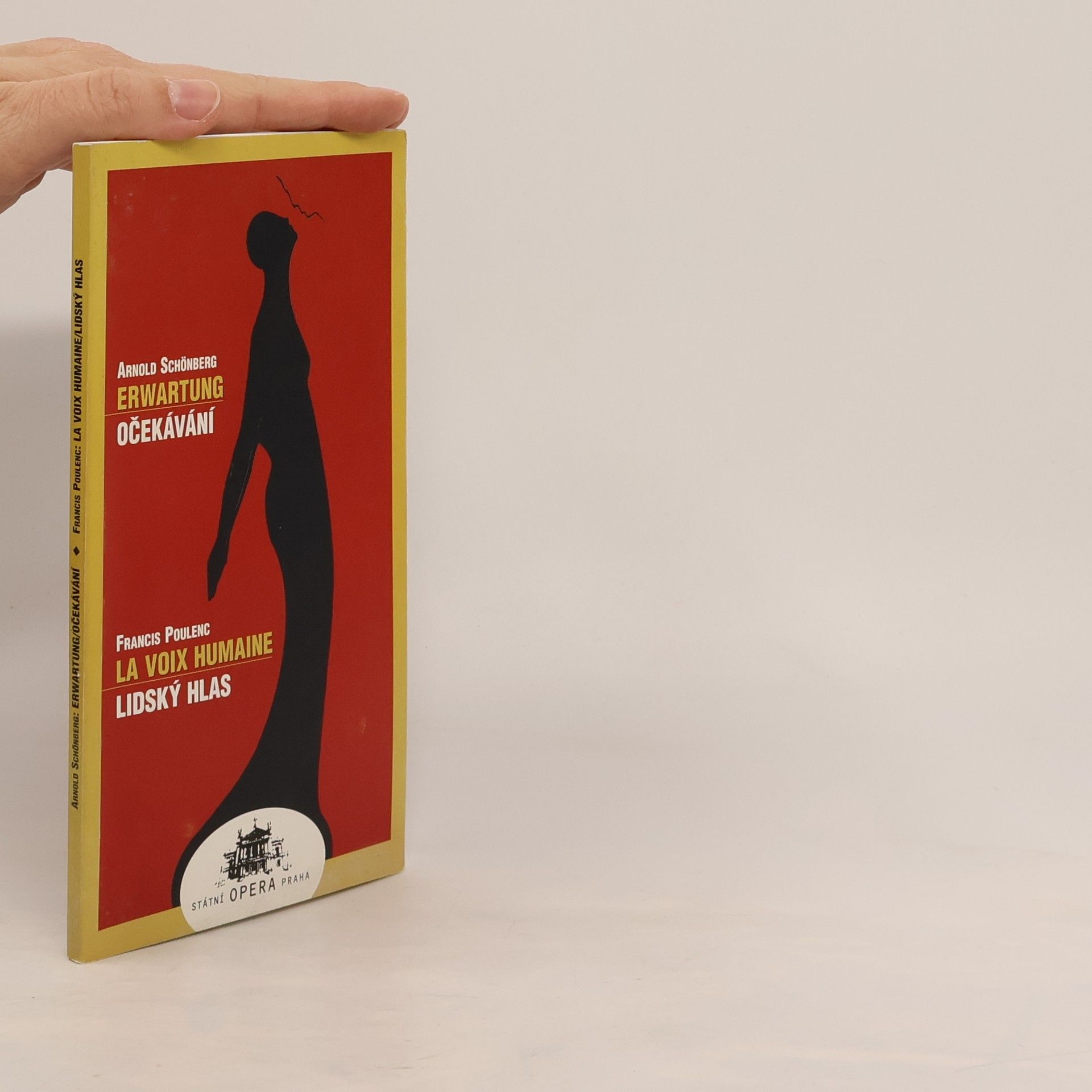"Les correspondances entre Schoenberg et Busoni d'une part, et entre Schoenberg et Kandinsky d'autre part, sont des documents exceptionnels sur les plans humain, artistique et musical. Schoenberg y dévoile, à proprement parler, la véritable théorie esthétique de l'atonalité. Il défend face à Busoni la cohérence de son style, avec Kandinsky, il discute de la question du constructif et de l'illogique dans l'art. L'échange porte aussi sur la religion et la question juive, c'est enfin le portrait de 3 créateurs de premier plan, engagés dans le renouveau artistique de l'avant et l'après guerre. L'édition est enrichie de différents textes de Schoenberg, Busoni et Kandinsky
Arnold Schönberg Livres
Arnold Schönberg, associé au mouvement expressionniste dans la poésie et l'art allemands, fut une figure de proue de la Seconde École de Vienne. Son approche novatrice de l'harmonie et du développement musical a marqué un tournant majeur dans la musique du XXe siècle, influençant des générations de compositeurs. Il est reconnu pour avoir développé la technique dodécaphonique et le concept de variation évolutive, modifiant fondamentalement les méthodes de composition. Au-delà de ses réalisations musicales, Schönberg fut également peintre, un théoricien musical crucial et un enseignant influent dont l'approche analytique et les vues esthétiques continuent de résonner dans la pensée musicale contemporaine.







Coherence, counterpoint, instrumentation, instruction in form
- 135pages
- 5 heures de lecture
Only Stravinsky can claim as much credit as Schoenberg for the most dramatic innovations in twentieth-century music. Inventor of the twelve-tone row, explorer of atonality and the hexachord, composer of tone poems, songs, and chamber music, and chief spokesman for the Vienna Circle, Schoenberg has become ever more influential as his successors have come to understand him. ø Fuller understanding has been delayed because many of his writings have not yet been edited or published. This volume collects four short works, each concentrated on a key issue in composition. Written in 1917, but altered and augmented many times in later years, the manuscripts edited and translated in this volume have never been published before. ø Their importance can permit no further delay since they present Schoenberg's thinking well after the publication in 1911 of Harmonielehre, his revolutionary theoretical book. The later texts provide numerous prospects for enhancing the study and appreciation of Schoenberg's compositions and theories. ø Also a painter, Schoenberg enjoyed the friendship of Kandinsky and the Berlin expressionists. This volume includes a frontispiece reproducing one of Schoenberg's paintings.
This harmony text ranges over such diverse subjects as nature, artistic creativeness, culture, and aesthetic theories of the past. The author writes of his fascination with sound; on the idea that musical order may be manifested in many inconceivable ways; and questions the need of order in music.
Die Publikation zeigt eine Auswahl von Arnold Schönbergs bildnerischen Werken.
Schoenberg's correspondence with Alma Mahler
- 448pages
- 16 heures de lecture
Schoenberg's Correspondence with Alma Mahler documents a modern music friendship spanning a half century (1903-1951) and two continents.
Schoenberg's early correspondence
- 384pages
- 14 heures de lecture
Early in his career, the composer Arnold Schoenberg maintained correspondence with many notable figures: Gustav Mahler, Heinrich Schenker, Guido Adler, Arnold Rosé, Richard Strauss, Alexander Zemlinsky, and Anton von Webern, to name a few. In this volume of Oxford's Schoenberg in Words series, Ethan Haimo and Sabine Feisst present English translations of the entirety of Arnold Schoenberg's early correspondence, from the earliest extant letters in 1891 to those written in the aftermath of the controversial premieres of his String Quartet No. 1, Op. 7, and the Kammersymphonie, Op. 9. The letters provide a wealth of information on many of the crucial stages in Schoenberg's early career, offering invaluable insights into his daily life and working habits. New details emerge about his activities at Wolzogen's Buntes Theater in Berlin, his frequently confrontational interactions with his first publisher (Dreililien Verlag), the reactions of friends and critics to the premieres of his works, his role in the founding of the Vereinigung schaffender Tonkünstler, his activities as a teacher, and his (all too often unsuccessful) attempts to convince musicians to perform his music. Presented alongside the editors' extensive running commentary, the more than 300 letters in this volume create a vivid picture of the young Schoenberg and his times.
Apropos Doktor Faustus
Briefwechsel Arnold Schönberg - Thomas Mann 1930-1951
- 397pages
- 14 heures de lecture
Mit dem Briefwechsel von Arnold Schönberg und Thomas Mann ist nicht nur ein Stück Exilgeschichte, sondern ein wesentliches Stück Literatur- und Musikgeschichte erstmals auf Deutsch nachzulesen. Die Briefe sind ein weiterer Baustein zum umfassenden Verständnis der Werke der beiden Ausnahmekünstler. Als der Literaturnobelpreisträger Thomas Mann 1941 zum ersten Mal nach Los Angeles kam, lebte er nur wenige Häuser entfernt vom Komponisten Arnold Schönberg. Trotz der räumlichen Nähe und eines gelegentlichen Kontaktes entwickelte sich keine enge Freundschaft zwischen den beiden. Der zunächst unregelmäßige, später intensivere Briefverkehr zeigt vielmehr inhaltliche und persönliche Bruchlinien auf, die tief in den Biografien der beiden Künstler verwurzelt scheinen. Vor allem die offensichtlichen Anlehnungen von Adrian Leverkühns – Protagonist in Manns Roman „Doktor Faustus“ – musiktheoretischen Überlegungen an Arnold Schönberg boten Anlass zu heftigen Auseinandersetzungen. Ergänzt wird der Briefverkehr durch Schönbergs Vier-Punkte-Programm für das Judentum und begleitende Essays des namhaften Musikhistorikers Bernhold Schmid, des Philosophen Andre Neher und des Schönberg-Schülers Richard Hoffmann.
